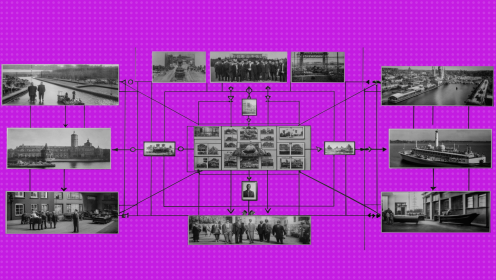Planning systematizes work on tasks — it is easier to sort out a bunch of cases and devote time to each issue without driving yourself with stress. Let's go through it again:
- first you create a global plan — you write out goals for 1-3 years;
-
then strategic — you define the steps (short-term goals) necessary to achieve global goals, achievable in 3-12 months;
-
then you take on a tactical plan (from 1 day to 3 months), which helps to achieve short—term goals (this includes weekly, monthly and quarterly plans);
-
and, finally, you create a schedule for the day - it will help structure tasks and prioritize them so as not to waste resources on what can be postponed or delegated.
We will talk about the last, daily planning.
Why do I need a schedule for the day
Planning things for the day sounds like something very dreary. It's necessary to decompose tasks every day, schedule them, prioritize them, distribute them throughout the day. Can I also do daily reports?
Yes, this is perhaps the biggest, but the only disadvantage of creating a schedule for the day. I assure you, it's worth it. Over time, daily planning will become a habit, like breakfast or brushing your teeth. And it has much more advantages:
- You focus on what's important. When creating a schedule for the day, you highlight the tasks that need to be done first, and postpone the secondary ones to return to them later.
-
You have more time. When the time is scheduled at least with an accuracy of half an hour, you are less likely to be distracted by scrolling the tape and other things that devour time. Otherwise, you will have to move the entire schedule in order to have time to do what is planned.
-
You keep meetings and deadlines under control. First of all, tasks with a date and time are entered into the schedule for the day: meetings, calls and tasks with deadlines — in general, everything that can not be forgotten and postponed for sure.
-
You observe the work-life balance. Distributing work tasks by time, the most important thing is to plan out personal tasks as well, and to lay down time for rest. Otherwise, you will be overtaken by mental fatigue, burnout and other scourges of poor time management.
-
You go to global goals. As I have already said, short-term plans help to get closer to the realization of global goals. High—quality daily planning is the basis of everything.
4 steps to creating a schedule for the day
It is very easy to create a plan for the day directly (time-boxing helps with this perfectly) — you break the day into blocks, and if necessary, you detail the blocks to specific tasks. But if you approach the daily planning with a rush, you can really break off — you won't have enough strength. Therefore, I advise you to start a little from afar.
Restore sleep mode
To become more productive, work on your lifestyle. In one of the previous articles, I told you that poor sleep reduces productivity, increases lethargy and fatigue. Therefore, it is important to start monitoring this — going to bed early, not eating at night, limiting the use of gadgets in the evening, etc.
Another reason why creating a schedule for the day should start with working on sleep is the mode. When there is a certain time at which you always wake up (while getting enough sleep, of course), it is very easy to build a plan around it for the rest of the day.
Analyze the energy during the day
Take care of yourself for a few days and determine when you have more strength — during this time, set difficult tasks that you would be more reluctant to undertake. For example, I will write an article or conduct an in-depth interview in the morning, when I have more energy. And for the evening I will leave the preparation of posts for social networks.
Make a list of distractions
In the schedule for the day, everything is laid out on the shelves — each task is tied to time. If you are distracted, concentration will decrease, and after it, productivity. Make a list of what distracts you: long lunch breaks, talking to colleagues not about work, scrolling the Instagram feed, a toy lying on the desktop. When you understand what distracts, you understand how to deal with it — put a time limit on applications, remove unnecessary things from the table, and so on.
Block the time
And now it's worth moving on to time blocking. I propose to divide this process into 5 stages:
- Block tasks that are tied to the exact time — meetings, calls, meetings, and so on. Put them on the schedule for the day first.
-
Highlight the priority tasks and secondary ones. At the time when the energy is at its peak (you will definitely have this — you will not trample against biorhythms), set the most difficult tasks, and for the remaining time — other priorities. Leave the secondary ones for now.
-
Fix the time for rest. Breaks of 10 minutes or more.
-
Distribute the secondary tasks for the remaining time.
-
Leave time for unscheduled tasks — correspondence with clients, calls with colleagues, and so on.
To sum up: the schedule for the day helps to focus on important tasks, do not forget about meetings and deadlines, and postpone minor tasks for a suitable time. Daily planning will help if you have global goals, but you don't understand what steps are needed to achieve them, or if you want to be more productive and achieve great results.

















